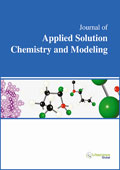jascm
|
|
Abstract: Pyrolysis of Cirsium yildizianum samples were carried out in a fixed-bed tubular reactor with (tincal, colemanite and ulexite) and without catalyst catalyst at three different temperatures (350, 450, 550 oC) with a constant heating rate of 50 oC/min. The yields of bio-char, bio-oil and gas produced along with the compositions of the resulting bio-oils were determined by elemental, Fourier transform infrared spectroscopy (FT-IR) and Gas chromatography/ mass spectrometry (GC–MS). The effects of pyrolysis parameters including temperature and catalyst on product yields were investigated. The results indicate that both temperature and catalyst had signficant effect on conversion of Cirsium yildizianum into solid, liquid and gas products. The highest liquid (bio-oil) yield of 40.62% including aqueous phase was obtained in the presence of colemanite (10%) as catalyst at 550 oC. 79 different compounds were identified by GC-MS in bio-oils obtained at 550 oC. Keywords: Biomass, Pyrolysis, Bio-oil, Catalyst, Cirsium yildizianum.Download Full Article |
|
|
Abstract: Densities were measured for the binary mixtures of water (methanol or ethanol) and an ionic liquid (IL) 1,3-diethylimidazolium diethylphosphate [EEIM][DEP] or 1-n-butyl-3-ethylimidazolium diethylphosphate [BEIM][DEP] at 1 atm and (293.15 to 333.15) K using a vibrating-tube densimeter. The molecular volume, standard entropy, and lattice energy of the two ILs were estimated with the Glasser theory. The excess volumes are negative for all binary mixtures studied in the whole composition range, and reach to the maximum at the mole fraction of IL being around 0.3. Besides, they decrease with increasing temperature for the aqueous solution of ILs, whilst a reverse trend is found for the IL solutions of methanol or ethanol at any concentration. The excess molar volumes were correlated successfully by a five-parameter polynomial equation as a function of temperature and mole fraction of IL with average absolute relative deviation (ARD) of density within 0.02%. Keywords: Density, excess volume, ionic liquid, water, methanol, ethanol.Download Full Article |
|
|
Abstract: The solubility of paracetamol in N-Methyl-2-pyrrolidone (NMP) + ethanol and NMP + ethanol + water solvent mixtures at 25 °C was determined using the shake flask method. The generated data extended the solubility database of pharmaceuticals and also was used to assess the solubility prediction capability of the Jouyban-Acree model in NMP + ethanol + water mixtures. The accuracy of the predicted solubilities was evaluated by the mean percentage deviation (MPD) between the predicted and experimental solubilities. The MPD of the Jouyban-Acree model for predicting the solubility of paracetamol in NMP + ethanol + water mixtures at 25 °C was 14.6 %. Keywords: Paracetamol, binary solvents, ternary solvents, solubility prediction, pharmaceutical cosolvents.Download Full Article |
|
|
Abstract: Cellulose is the most abundant biopolymer which is a topic of extensive research work. In this study Fourier Transform Infrared Spectroscopy (FTIR) was utilized to assign the molecular structure of cellulose. B3LYP at 3-21g**, 6-31g** and LANL1DZ then MP2 at 6-31g* levels of theories were conducted to compare the calculated vibrational spectra with the FTIR spectrum. Model molecules of cellulose starting with monomer up to cellulose 18 units were studied with PM3 semiemperical method in order to follow up the effect of polymerization upon some selected physical parameters. Results indicate that final heat of formation and band gap energy have decreased with increasing cellulose units while total dipole moment has increased with increasing cellulose units. It is concluded that the reactivity of cellulose has increased with increasing the units also the unique hydrogen bonding dedicates cellulose to several applications. Keywords: Cellulose, FTIR, PM3, DFT and Physical propertie.Download Full Article |
|
|
Abstract: Synthesis of N-substituted 1,2,3,4 –tetrahydroisoquinoline derivatives and bis-isoquinoline has been carried out via a Pictet-Spengler condensation. Tetrahydroisoquinolines were obtained from 2-(3’,4’-dimethoxyphenyl) ethylamine in four steps. The entire synthesized compounds were characterized by IR, 1H NMR and mass spectral data. Keywords: Tetrahydroisoquinoline, Pictet-Spengler reaction, Imine, Trifluoroacetic acid.Download Full Article |


